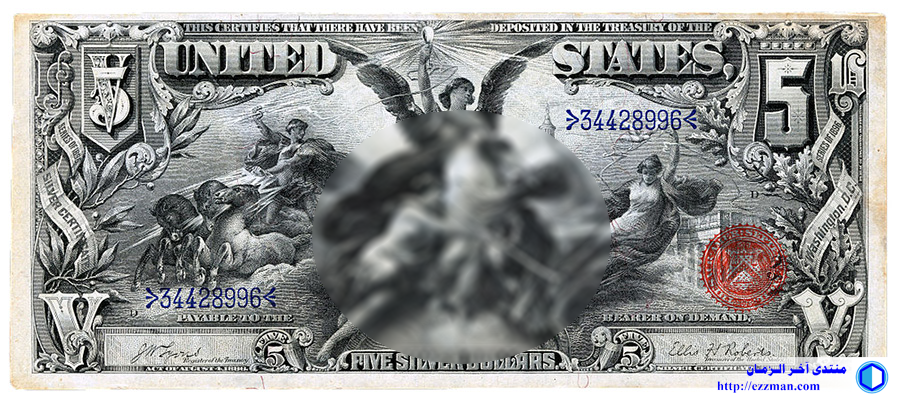How did
american dollar bills change?
olga1902 (36) in money • 11 months ago
The first money went into circulation since the middle of the 18th century. They were used in North America in all the colonies, which at that time numbered 13. Depending on the location of the location, they were called either a
dollar or a shilling. The banknotes were constantly forged, so the government was constantly improving their protection. For this and printing on banknotes of complex patterns, real leaves were also used. Also, for the forgery of bills, execution was determined.

1$, 1770
At the end of the US War of Independence, the Continental Congress issued the first national currency, the
american dollar. The design of continental dollars was not much different from colonial banknotes. But it was on them appeared an unfinished pyramid, which you can contemplate on the back of the
dollar bill. Issue of banknotes totaled 240 million dollars, which subsequently caused a monstrous inflation, which by 1781 led to its depreciation.

50$, 1779
Some stability was restored only after the signing of the Coin Act in 1792. A clear and logical monetary system was established, including both gold ten-dollar and copper half-cent coins, which were minted at the state mint. But the printing of banknotes was not so smoothly, because in their value depended on the financial condition of the institutions with which they were printed. So for a denomination of 5 dollars, issued by the Agricultural Bank of Tennessee gave only $ 4. Soon such a position used fraudsters, proceeding to issue counterfeit banknotes through one-day banks.

5$, 19th century
The next period in the development of paper
bills was the Civil War. To maintain soldiers, the seal was produced in enormous sizes. The departed states began issuing their own currencies, which have no security. In those days, the
dollar has already begun to create a distinctive design - simple, but at the same time having an ornamented border and two-color printing.

10$, 1862 (confederation)
In 1862, a law was signed to start issuing notes for $ 50 million, which were provided with government securities. But their existence did not last long. The following year they were withdrawn from circulation.

10$, 1862(union)
At the end of the war, the country's financial system entered a new level, which is called the golden age of design of banknotes. In addition to the greenbacks, the issue of silver certificates was launched. Silver certificates, in turn, could be exchanged for coins and ingots of silver.

10$, greenback
The year 1886 was remembered by the first design of a banknote depicting a real woman of the "first lady of the country" - Martha Washington.

Bills with Martha Washington, 1886
In 1892, the Treasury issued an educational series. The issue was held in honor of the World Exhibition and was considered the most beautiful in the history of the development of US notes. On a one-dollar bill, they portrayed Colombia pointing to Washington's monument. The design of this banknote traces a huge number of complex elements, thanks to which this series and became famous.

Silver certificate, 1892
On the denomination of $ 5, the bankers depict an allegorical scene "Electricity brings light to the world," thereby indicating America's leadership in technological innovation.

Silver certificate of 5 dollars, 1896
It was thanks to the silver certificates that the borders of the banknotes and the sizes of the portraits appeared, that is, the foundation was laid, in addition to the silver certificates, gold was also issued, giving the right to the gold deposited in banks, sometimes reaching amounts of 10 thousand dollars. The turnover was until 1933, until the announcement of the ban by President Roosevelt on the accumulation of gold from private individuals.

Silver certificate of 5 dollars, 1899
In the 20th century gold certificates were issued with all of us so familiar and familiar image of Washington. The difference is only in the use of "golden" tone and tri-color printing at these times.

Gold certificate with a face value of 500 dollars, 1865
The classical design of banknotes has its roots from the beginning of the 20th century, when the Law on the Federal Reserve (1913) was adopted. The initial range of colors consisted of black and white-red tones.

100$, 1914
After, I would like to note, the beginning of the most radical reform, during which banknotes were reduced to the size of 15x6 cm (with the original size of 19x8 cm). First of all, the reduction in size was done to save paper. In circulation, there were
bills not only to all the usual one-, five-, ten-, twenty-, hundred-dollar bills, but also in nominal value of five hundred, thousand, five thousand and ten thousand dollars. Denominations of five hundred, one thousand, five thousand and ten thousand stopped printing in 1934.

10 000$, 1934

100$, 1996
A denomination of ten thousand dollars is also significant with his portrait of Samon Chase, who was the usual Secretary of the Treasury under Lincoln. While we are accustomed to seeing more significant personalities in the form of presidents, their wives or founders, and so, we all have so well-known
bills in 100 dollars updated in 1996. Changes in the shape of the head of the presidents, or rather their increase, moving them from the center, adding color-changing inks, were made